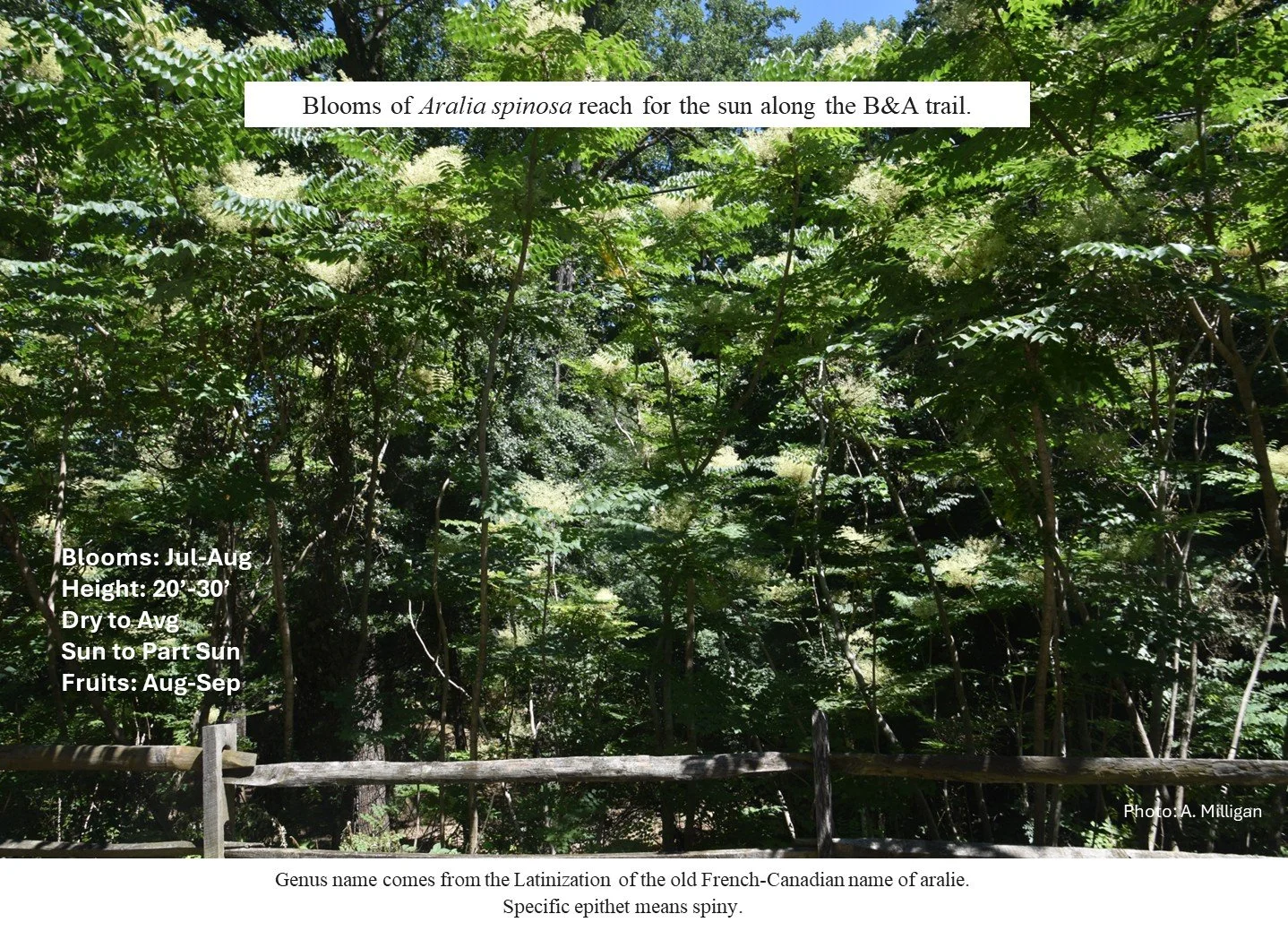Latin for Gardeners
October’s Native Maryland Plant
Aralia spinosa L.
(ah-RAY-lee-ah spih-NO-sah)
Common Name: Devil’s Walking Stick, Prickly Elder
Anyone visiting one of the many trails in Maryland’s deciduous forests in late summer and early fall, is certain to see a remarkable plant lighting up the woodland with its massive plumes of flowers – the highly thorny and very tall shrub, Aralia spinosa, commonly known as the Devil’s Walking Stick. Its blooms can be enjoyed from a distance; they appear as clusters of floating clouds and yet, upon closer inspection, they are inflorescence of 5-petaled creamy white flowers, teeming with pollinators, a wondrous sight to behold.
Aralia spinosa is known for its extremely prickly branches and petioles, its bark and roots can cause skin irritation, putting it on the short list of native plants to ‘look at, but don’t touch’. It’s a notable plant in other ways as well - its leaves can reach up to 4’ long, giving it the distinction of having the largest compound (1) leaf in North American temperate forests. As the forest fills in, the occurrence of A. spinosa will decline, it’s shade intolerant so it is most often seen along forest edges.
Although people may want to avoid getting too close to Aralia spinosa, that is not the case for wildlife. This plant has high wildlife value - its flowers and fruit provide food for pollinators, birds and mammals. Deer may browse the leaves, but they aren’t known to favor this plant.
There are plenty of things to scare you in October, don’t let the Devil’s Walking Stick be one of them!
(1) Consists of multiple small leaflets that are physically separated from one another, all of them are attached to the same rachis (main axis). Together they create one leaf.
Alison Milligan – MG/MN 2013
Watershed Steward Class 7/Anne Arundel Tree Trooper
Chesapeake Bay Landscape Professional (CBLP)
aligmilligan@gmail.com















